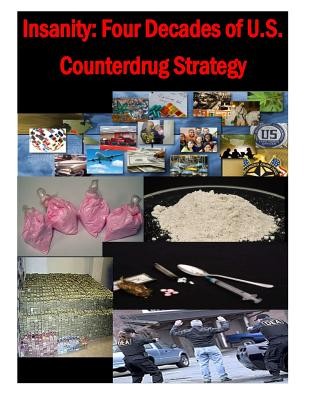
- We will send in 10–14 business days.
- Author: U S Army War College
- Publisher: CreateSpace Independent Publishing Platform
- Year: 2014
- Pages: 68
- ISBN-10: 1499609302
- ISBN-13: 9781499609301
- Format: 21.6 x 28 x 0.4 cm, minkšti viršeliai
- Language: English
- SAVE -10% with code: EXTRA
Insanity - Four Decades of U.S. Counterdrug Strategy (e-book) (used book) | bookbook.eu
Reviews
Description
In the four decades since President Nixon first declared war on drugs the U.S.counterdrug strategy has remained virtually unchanged - favoring supply-reduction, law enforcement and criminal sanctions over demand-reduction, treatment and education. While the annual counterdrug budget has ballooned from $100 million to $25 billion, drug availability of most illicit drugs remains at an all-time high. The human cost is staggering - nearly 40,000 drug-related deaths in the U.S. annually. The societal impact, in purely economic terms, is now estimated to be approximately $200 billion per year. And the global illicit drug industry now accounts for 1 percent of all commerce on the planet - approximately $320 billion annually. Legalization is almost certainly not theanswer; however, an objective analysis of available data confirms that: 1) the U.S. has pursued essentially the same flawed supply-reduction strategy for forty years; and 2) simply increasing the amount of money invested each year in this strategy will not make it successful. Faced with impending budget cuts and a future of budget austerity, policymakers must replace the longstanding U.S. counterdrug strategy with a pragmatic, science-based, demand-reduction strategy that offers some prospect of reducing the economic and societal impacts of illicit drugs on American society
EXTRA 10 % discount with code: EXTRA
The promotion ends in 22d.02:46:09
The discount code is valid when purchasing from 10 €. Discounts do not stack.
- Author: U S Army War College
- Publisher: CreateSpace Independent Publishing Platform
- Year: 2014
- Pages: 68
- ISBN-10: 1499609302
- ISBN-13: 9781499609301
- Format: 21.6 x 28 x 0.4 cm, minkšti viršeliai
- Language: English English
In the four decades since President Nixon first declared war on drugs the U.S.counterdrug strategy has remained virtually unchanged - favoring supply-reduction, law enforcement and criminal sanctions over demand-reduction, treatment and education. While the annual counterdrug budget has ballooned from $100 million to $25 billion, drug availability of most illicit drugs remains at an all-time high. The human cost is staggering - nearly 40,000 drug-related deaths in the U.S. annually. The societal impact, in purely economic terms, is now estimated to be approximately $200 billion per year. And the global illicit drug industry now accounts for 1 percent of all commerce on the planet - approximately $320 billion annually. Legalization is almost certainly not theanswer; however, an objective analysis of available data confirms that: 1) the U.S. has pursued essentially the same flawed supply-reduction strategy for forty years; and 2) simply increasing the amount of money invested each year in this strategy will not make it successful. Faced with impending budget cuts and a future of budget austerity, policymakers must replace the longstanding U.S. counterdrug strategy with a pragmatic, science-based, demand-reduction strategy that offers some prospect of reducing the economic and societal impacts of illicit drugs on American society


Reviews